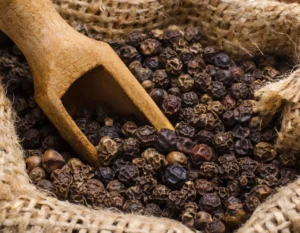Capsicum annuum is a flowering plant known for its pungent fruits commonly called peppers. Cultivated varieties range from bell peppers with minimal heat to fiery cayenne peppers. The heat sensation arises from the active compound capsaicin, concentrated in the placenta and seeds. Capsaicin exhibits numerous bioactive properties with potential health benefits. Tradi- tionally, Capsicum annuum has been used in medicine and food preservation. Today, it is a major agricultural crop and valued culinary spice worldwide. Bell peppers are rich in vitamins C and A, while chili peppers are potent antioxidants. Capsaicin is being investigated for its role in pain management, weight loss, and cancer prevention. Topical capsaicin is used in creams for muscle pain and joint inflammation. Overconsumption of chili peppers can cause irritation and digestive discomfort.
Benefits:
- Analgesic: Capsaicin desensitizes pain receptors, potentially alleviating various pain condi- tions.
- Anti-inflammatory: Capsaicin exhibits anti-inflammatory effects, potentially beneficial for arthritis and related conditions.
- Metabolic: Capsaicin may increase thermogenesis and energy expenditure, potentially aiding weight management.
- Antioxidant: Capsaicin and other phenolic compounds possess antioxidant properties, potentially protecting against cellular damage.
- Cardiovascular: Capsaicin may contribute to improved blood flow and potentially reduce the risk of cardiovascular disease.






Reviews
There are no reviews yet.